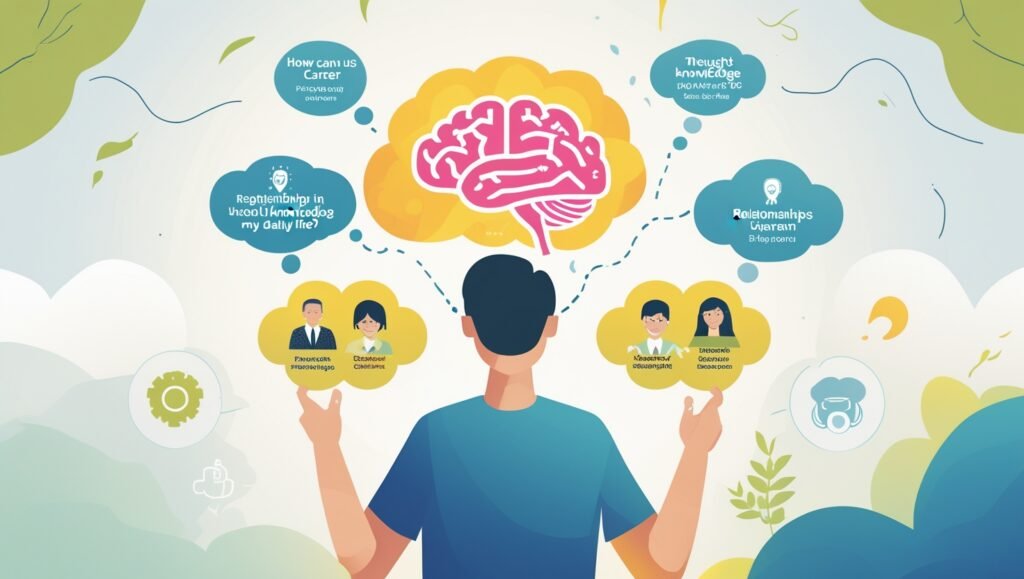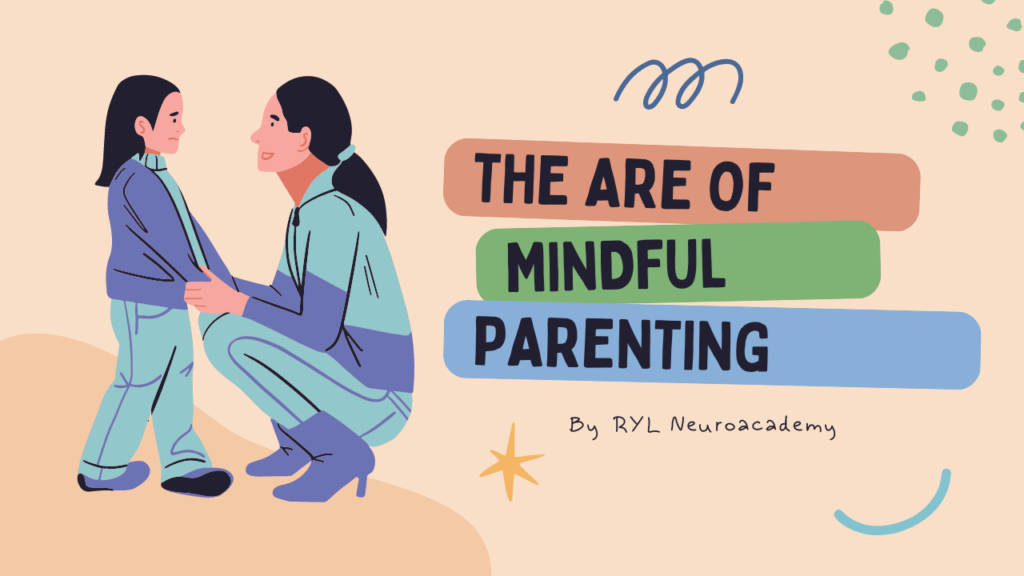
How Can I Use NLP in My Daily Life? A Beginner’s Guide to Practical Applications
Neuro-Linguistic Programming (NLP) is a psychological framework that explores the connection between the brain (neuro), language (linguistic), and behavioral patterns learned through experience (programming). It is designed to help individuals understand and modify their thoughts, language, and actions to achieve specific outcomes. NLP focuses on how we perceive the world, communicate, and influence ourselves and others.
Benefits of NLP in Personal and Professional Life
NLP offers numerous advantages, including:
- Improved Communication: Helps individuals express themselves clearly and build rapport in relationships.
- Enhanced Emotional Control: Provides tools for managing stress, anxiety, and negative emotions.
- Increased Confidence: Enables individuals to overcome limiting beliefs and self-doubt.
- Better Goal Achievement: Encourages clear goal-setting and strategies for success.
- Strengthened Leadership Skills: Useful for influencing and motivating others in professional settings.
Setting the Stage for Actionable Tips
NLP is not just a theoretical concept; it offers practical techniques you can use immediately to improve your life. From visualization exercises to reframing negative thoughts, NLP empowers you to make meaningful changes. In the sections ahead, you’ll discover how to integrate NLP into your daily routine to enhance communication, overcome challenges, and achieve your personal and professional goals.
Why Use NLP in Daily Life?
Defining NLP in Simple Terms
Neuro-Linguistic Programming (NLP) is a method for understanding and improving how we think, communicate, and act. It focuses on the relationship between the mind (neuro), our use of language (linguistic), and the habits or behaviors we develop (programming). Essentially, NLP provides tools to reprogram our mindset and behaviors to achieve personal and professional success.
How NLP Connects Language, Thought, and Behavior
NLP operates on the principle that our thoughts shape our emotions, our emotions influence our language, and both determine our actions. For example:
The way we talk to ourselves (inner dialogue) affects our confidence and decision-making.
Using positive language in conversations can build stronger connections and resolve conflicts.
By identifying unhelpful thought patterns, we can change behaviors that no longer serve us.
This interplay between thoughts, language, and behavior enables individuals to shift their perspective and create new, more effective outcomes in life.
The Science and Psychology Behind NLP
NLP is rooted in psychology, drawing from cognitive-behavioral therapy (CBT), linguistics, and neuroscience. While not all aspects of NLP are scientifically proven, its techniques align with how the brain processes and learns. For example:
- 1. Anchoring uses psychological conditioning to create positive emotional states.
- 2. Modeling Excellence studies how successful individuals think and act, allowing others to replicate their strategies.
- Through these approaches, NLP provides a structured way to understand how the brain works and how small changes in thoughts and language can lead to significant transformations in behavior.
Practical Ways to Use NLP Daily
Active Listening Techniques Using NLP
Active listening is a cornerstone of effective communication. Using NLP, you can improve your listening skills by:
- Focusing Fully: Pay close attention to the speaker’s words, tone, and body language without interrupting.
- Paraphrasing: Repeat back what the speaker said to show understanding and clarify their message.
- Asking Open-Ended Questions: Use questions that encourage detailed responses to foster deeper conversations.
- These techniques help build trust and understanding in both personal and professional interactions.
Building Rapport Through Mirroring and Matching
Rapport is the foundation of strong relationships. NLP suggests techniques like:
- Mirroring: Subtly mimic the other person’s body language, gestures, or tone of voice to create a sense of connection.
- Matching Speech Patterns: Adapt your choice of words, pace, or energy level to align with the other person’s style.
- These methods create a natural bond, making communication smoother and more effective.
Overcome Limiting Beliefs
Identify and Reframe Negative Thought Patterns
NLP helps you pinpoint beliefs that hold you back, such as “I’m not good enough.” To reframe:
- Identify the thought and its emotional impact.
- Challenge its validity and replace it with a more empowering belief, like “I am capable of learning and growing.”
- This shift in perspective fosters confidence and resilience.
- Use Anchoring Techniques to Shift Mindset
- Anchoring involves associating a positive emotion with a specific trigger (e.g., a gesture or word). For example:
- Recall a moment when you felt confident.
- Repeat a specific gesture (like squeezing your thumb and forefinger together) while reliving that feeling.
- Practice this regularly to activate confidence whenever needed.
Manage Stress and Emotions
NLP Techniques for Stress Relief
- The Swish Pattern: Replace stressful thoughts with calming imagery by visualizing the stress fading and a positive image taking its place.
- Breathing Techniques: Focus on slow, deep breaths while repeating calming phrases to reduce anxiety.
- Visualization Exercises for Emotional Control
- Imagine a “control dial” in your mind and turn it down to lower stress.
- Picture yourself in a calm, peaceful setting to regain emotional balance.
- These exercises help regulate emotions and maintain focus in challenging situations.
Enhance Goal Setting and Achievement
Using SMART Goals with NLP Strategies
NLP enhances goal-setting by making them Specific, Measurable, Achievable, Relevant, and Time-bound (SMART) while focusing on:
- Clarity: Visualize the desired outcome vividly.
- Sensory Details: Imagine what achieving your goal looks, sounds, and feels like to make it more tangible.
- Mental Rehearsal for Success
- Mental rehearsal involves visualizing yourself successfully achieving your goal. For example:
- Picture yourself giving a confident presentation or completing a challenging task.
- Engage all senses to make the experience as real as possible.
This practice boosts confidence and primes your brain for successs
- Therapists:
Therapists use NLP techniques like reframing and anchoring to help clients overcome phobias, manage anxiety, and change negative thought patterns. For instance, a therapist may guide a client to reframe a traumatic experience as a source of strength and growth. - Salespeople:
Sales professionals use NLP to build rapport with clients by mirroring their body language and speech patterns. They also employ anchoring techniques to associate their product with positive emotions, creating a sense of trust and connection that aids in closing deals. - Public Speakers:
Motivational speakers often use NLP visualization exercises to mentally rehearse their presentations. This helps them deliver speeches with confidence while effectively connecting with diverse audiences.
Stories of Individuals Improving Their Daily Lives with NLP Techniques
- Overcoming Stage Fright:
Sarah, a student, struggled with public speaking anxiety. By using anchoring, she associated a deep breath and a hand gesture with a sense of calm and confidence. Over time, this helped her deliver presentations without fear. - Improving Personal Relationships:
John, a manager, applied active listening and mirroring techniques in conversations with his team and family. This led to better communication, stronger relationships, and fewer misunderstandings. - Achieving Weight Loss Goals:
Maria used NLP visualization techniques to imagine herself making healthy food choices and exercising regularly. By setting SMART goals and mentally rehearsing her success, she stayed motivated and achieved her fitness targets. - Breaking Bad Habits:
Alex, a smoker, used the Swish Pattern to replace the urge to smoke with the image of a healthier, smoke-free lifestyle. This shift helped him quit smoking after years of struggle.
These real-world examples demonstrate how NLP can be applied to everyday challenges, enabling individuals to achieve personal and professional success
Simple Steps for Beginners to Practice NLP
- Understand the Basics: Start by learning the fundamental concepts, such as anchoring, reframing, and modeling. Watch introductory videos or read simple guides to grasp how NLP works.
- Practice Self-Awareness: Pay attention to your thoughts, language, and behavior patterns. Identify areas where you’d like to improve, such as communication or confidence.
- Apply Basic Techniques: Use visualization exercises to set goals or manage stress. Practice mirroring and matching during conversations to build rapport.
- Reflect and Adjust: After trying an NLP technique, reflect on its effectiveness. Fine-tune your approach based on what works best for you.
Resources to Learn NLP
- Books:
“Frogs into Princes” by Richard Bandler and John Grinder
“The Structure of Magic” by Richard Bandler and John Grinder
“NLP at Work” by Sue Knight
- Courses:
Enroll in online platforms like Udemy, Coursera, or NLP-specific academies.
Look for beginner-friendly courses with practical exercises and certifications.
- Coaching Programs:
Join NLP coaching or mentoring programs to receive personalized guidance.
Attend NLP workshops and seminars to learn directly from experienced practitioners.
Apps and Tools to Incorporate NLP Techniques
- NLP Coach Apps:
Apps like “Mindset by Design” or “NLP Mastery” provide guided exercises for daily practice.
- Visualization Tools:
Use meditation apps like Calm or Headspace to practice NLP-based visualization and emotional regulation.
- Journaling Apps:
Apps like Day One or Reflectly can help you track thought patterns, reframe beliefs, and set SMART goals.
Starting with these simple steps and resources allows you to gradually integrate NLP into your life, making it a practical tool for personal and professional growth
Thus This Is How NLP Is Be effective In Your Life On Day To Day Basis.
Thus Using NLP One CAn Engance Their Career and Acheive Their Goals Fast

